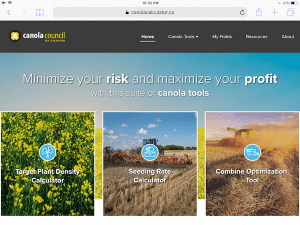Harvest experience and disease levels in 2019 will influence seed purchasing decisions. When making final seed decisions, consider disease resistance, days to maturity, lodging, specialty oil traits and harvest traits in addition to yield to select varieties well suited to typical conditions on the farm.
Online variety comparison tool. Enhance your 2020 seed decision making with the searchable online database of grower-funded variety trials. Results from 2019 will be loaded after harvest, so while waiting you can search the results from 2018. Go to canolaperformancetrials.ca and use the ‘Search Performance Trial Results’ tool at the bottom of the main page. This article provides good tips on how to use the tool.
Which clubroot-resistant seed to buy? Ideally, clubroot-resistant (CR) varieties should be grown before the disease becomes established in your area. CR varieties should be used before clubroot arrives on a field because the pathogen, once detected, will already have a leg up on any future management strategies. CR varieties used early will keep spore loads low and local, particularly if combined (and this is important) with at least a two-year break between canola crops and an absolute minimum amount of soil movement. Clubroot update and management ‘recipe’. Canola growers already using CR varieties with the same resistance mechanism may want to pick a new variety next year with a new resistance source, given that repeat use of the same CR source will select for pathotypes not controlled by the resistant genes in that CR source. Link to the clubroot.ca variety list.
Test blackleg races in a field, make better seed decisions. Did you have more blackleg than usual this year? Then it may be time to switch resistance sources. Labs can test fresh stems (taken from this year’s crop) or old stem pieces found in fields that will be seeded to canola next year to determine the races present. Read more.
Ask about pod shatter traits. Not all pod-shatter tolerance traits are the same, and there is no uniform system for rating them. Talk to the seed company rep about what to expect, especially with an uneven crop with variable stages of maturity. You will want to know how long mature pods will stay together while waiting for the least mature areas of the field to catch up.
How much seed to buy? Try the tools at canolacalculator.ca to find the target plant stand that fits your risk profile, then try out a few seed weights (because you won’t know the actual weights yet) to set an appropriate seeding rate. Stubble counts from this year’s crops cross-referenced with yield results and input costs for those fields may help determine the ideal stand for this year. Why count canola stems in the fall?
Dig deeper:
Canola Digest on new seed tech for 2020 (Includes InVigor RATE, TruFlex, stacked LL and RR, and ‘power combinations’.)



